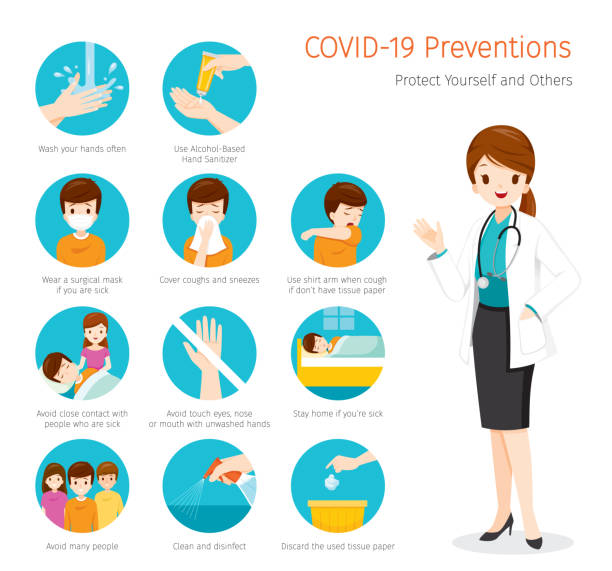
Currently, surgery and pharmacotherapy are the main options for treating obesity. There are many other options. In certain cases, those suffering from obesity might benefit from education or support. For instance, the Girls Make Your Move campaign aims to empower young women to be more active.
The treatment of obesity is a complex issue. It is a multi-cause disease that is affected by a wide variety of factors including genetic conditions, endocrine problems, environmental factors, and psychological stimuli. In addition, obesity is often accompanied by negative health effects that can impact the quality of life of individuals. This is a serious problem for health that can lead to high healthcare costs. Obesity can cost anywhere from 2 to 7 per cent of total health care expenditure in developed countries. The global economic cost of obesity is $2.0 trillion. Global mortality from obesity is estimated at 2.8 million annually.

In addition to its adverse effect on an individual's physical health, obesity can affect his or her social and economic life. Obesity increases the likelihood of several serious medical complications including cancer, heart disease, diabetes, and cardiovascular disease. People who are obese often have to deal with weight discrimination. These people are often viewed as lazy, gluttonous, or lack self-discipline. These stereotypes can adversely impact the access to treatment and services for obesity.
The treatment of obesity is a multi-disciplinary issue that requires coordination between health care professionals. However, obesity treatment can be hindered by a lack of education and training among health care professionals. Therefore, more education and training should be provided to health care professionals to better address the weight management needs of patients. In addition, healthcare professionals should be encouraged to develop better weight management discussions with their patients. This will improve the quality and care of patients suffering from obesity.
The treatment of obesity is also affected by stigma and weight discrimination. It is important to promote initiatives to eliminate weight bias in society. Education programs that combat weight stigmatization can also be used. The media reporting of obesity can be a powerful tool in education. A media report can also be a tool to obtain treatment for obese individuals.
Obesity is a complex problem that requires a long-term solution. It is crucial to build a systemic portfolio that can improve outcomes across socioeconomic levels. It is also important to focus on prevention of childhood obesity. Obese kids are more likely than others to become obese later in life. They are also at greater risk of developing type 2 diabetes, and cardiovascular disease. Additionally, obese children are subject to weight-based teasing at school.

New public narratives are needed for the treatment of obesity. It must be consistent with today's scientific knowledge. It must address the negative effects of weight stigma on society and culture. It will take concerted efforts from many stakeholders to change the public narrative.
FAQ
What are the 7 tips to have a healthy life?
-
You should eat right
-
Exercise regularly
-
Rest well
-
Get plenty of water.
-
Get enough rest
-
Be happy
-
Smile often
What's the difference between a calorie and kilocalorie?
Calories are units that measure the energy content of food. Calories are the unit of measurement. One calorie equals one degree Celsius of energy to heat 1 gram of water.
Kilocalories are another term for calories. Kilocalories measure in thousandths (or calorie) of a calorie. 1000 calories are equal to one kilocalorie.
How often should i exercise?
A healthy lifestyle requires regular exercise. There is no set time limit for exercising. Finding something that you love and sticking with it is the key.
If you exercise three times a week then aim for 20-30 mins of moderate intensity. Moderate intensity means you'll still be breathing hard after you've finished. This type of exercise burns approximately 300 calories.
Walking is a great option if you are a keen walker. You can do 10-minute walks four days per week. Walking is low in impact and easy for your joints.
If you'd rather run, try jogging for 15 minutes three times a week. Running is a great exercise to build muscle tone and burn excess calories.
If you're not used to exercising, start slowly. Begin with 5 minutes of cardio every other day. Gradually increase duration until you achieve your goal.
What should my diet consist of?
Get lots of fruits & vegetables. They are high in vitamins and minerals, which can help strengthen your immune system. They are also rich in fiber, which is good for digestion and makes fruits and vegetables filling. You should eat at least five servings per day of fruits and vegetables.
You should also drink lots of water. Water helps flush toxins out of your body and makes you feel fuller between meals. Drink about eight glasses each day.
Whole grains are better than refined grains. Whole grains are rich in nutrients such as iron, zinc and magnesium. Refined grains have been stripped of some of their nutrition.
Avoid sugary drinks. Sugary drinks are full of empty calories and lead to obesity. Instead, you can opt for water or milk, as well as unsweetened herbal teas.
Avoid fast food. Fast food has little nutritional value. You won't get the energy you need to function well, despite how delicious it may be. Choose healthier options like salads, soups and sandwiches as well as pasta dishes.
Limit your alcohol intake. You can reduce your intake of alcohol by limiting the amount of empty calories. Limit your intake to two alcoholic drinks per week.
Reduce red meat intake. Red meats have high levels of cholesterol and saturated fat. Choose lean cuts such as beef, pork and lamb, chicken, fish, or turkey.
How do I know what's good for me?
You must listen to your body. Your body knows best when it comes to how much exercise, food, and rest you need. To avoid overdoing it, it's important that you pay attention to what your body is telling you. Take care of yourself and listen to your body.
What makes an antibiotic effective?
Antibiotics are drugs which destroy harmful bacteria. Antibiotics can be used to treat bacterial infection. There are many different types of antibiotics. Some can either be administered orally, while others may be injected. Other antibiotics can also be applied topically.
Many people who have been exposed can be prescribed antibiotics. For example, if someone has had chicken pox, he or she might take an oral antibiotic to prevent shingles later on. An injection of penicillin may be necessary to prevent pneumonia if someone has strep.
A doctor should give antibiotics to children. Side effects of antibiotics can be more dangerous for children than for adults.
Diarrhea is one of the most common side effects of antibiotics. Side effects of antibiotics include diarrhea, stomach cramps and nausea. These symptoms usually go away after treatment ends.
Statistics
- This article received 11 testimonials and 86% of readers who voted found it helpful, earning it our reader-approved status. (wikihow.com)
- WHO recommends reducing saturated fats to less than 10% of total energy intake; reducing trans-fats to less than 1% of total energy intake; and replacing both saturated fats and trans-fats to unsaturated fats. (who.int)
- nutrients.[17]X Research sourceWhole grains to try include: 100% whole wheat pasta and bread, brown rice, whole grain oats, farro, millet, quinoa, and barley. (wikihow.com)
- In both adults and children, the intake of free sugars should be reduced to less than 10% of total energy intake. (who.int)
External Links
How To
How to stay motivated to exercise and eat healthily
Healthy living: Motivational tips
Motivational Tips For Staying Healthy
-
Write down your goals
-
Set realistic goals
-
Be consistent
-
Reward yourself when you achieve your goal
-
You don't have to give up if your attempts fail.
-
Have fun